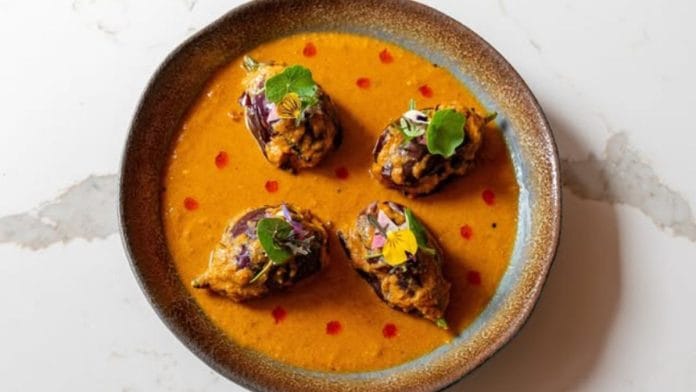New Delhi: To dine at New York’s Michelin–starred Semma, you’ll need more than just an appetite. A calendar, a reminder, and a whole lot of patience.
On any given day, there’s a waitlist of 1400, said executive chef and co-owner Vijaya Kumar, who runs the kitchen. The chef from Dindigul has elevated South Indian cuisine staples like poriyal, pirattal, and paniyaram from humble to haute. Reservations open two weeks in advance, and the 79 tables fill up in the blink of an eye.
“South Indian cuisine is getting its long due recognition. And, this could happen because the chefs took pride in the food they ate,” Kumar told ThePrint.
As the world updates its limited Indian cuisine vocabulary beyond butter chicken, chicken tikka, and naan, South Indian food is having its long-overdue moment. High-end Indian restaurants serving biryani, rogan josh, and kebabs have become a mainstay in the United States, and especially in the United Kingdom. But Semma is part of a wave of high-end restaurants that are celebrating South Indian cuisine and not just giving it a passing nod.
Chicago’s Thattu introduced the city to moru and kadala curry, while Copra popularised kori gassi in San Francisco in 2023. This year, Chatti brought karimeen to Manhattan. The bill can run up to $70—without alcohol—a far cry from the $17.49 rava masala dosa in Sarvanna Bhavan at 81 Lexington Ave, New York.
Indian food—especially South Indian—has never been this cool in the US. Behind this frenzy is a fearless tribe of chefs who decided to proudly serve the dishes they grew up eating—bold, regional, unapologetically South Indian.
“We don’t pretend; we don’t have to. We are proud of our food culture and the diners love us for who we are,” said chef Regi Mathew, who opened Chatti in February at West 37th Street, New York.
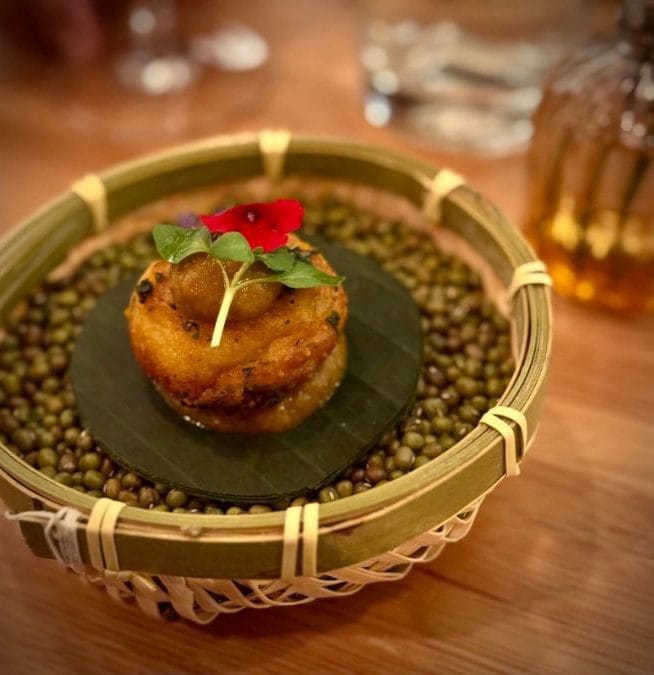
In London, restaurants like Rasa, which opened in 2014, and Quilon, which opened in 1999, have had legions of fans salivating over rasam, chicken sukka, gunpowder dosa, and vatha kuzhambu for decades.
What sets South Indian restaurants apart is that they don’t try to Westernise or dilute the flavours. There’s no foam, no deconstructed sambar, no unnecessary garnish. A prawn curry tastes exactly how it should: spicy and layered with coconut, tamarind, and the smoky heat of curry leaves.
The food isn’t gimmicky.
Food critic and former journalist Sourish Bhattacharyya credited the surge in the popularity of South Indian food to the growing visibility and influence of the South Indian diaspora.
“From JD Vance’s wife Usha to Vivek Ramaswamy, from Sundar Pichai to Satya Nadella, from Mindy Kaling to Poorna Jagannathan, there’s no walk of life that doesn’t have hugely successful figures from the South Indian diaspora,” he said.
Bhattacharyya also noted that people from South India now form a visible, vocal majority in the Indian diaspora.
According to him, the needle has moved from the Ashok Bajaj model of Indian restaurants in the US, where southern flavours were muted in favour of butter chicken, gobhi Manchurian, and ‘naan bread’.
“Remember Mindy Kaling preparing dosas with Kamala Harris in the run-up to the 2020 election campaign? The success of the Dosateria chain of restaurants was the first sign of how mainstream South Indian restaurants were becoming,” Bhattacharyya recalled.
‘What I grew up eating’
Chef Vijaya Kumar grew up eating snails in his Tamil Nadu village, but as a child, he never dared admit it to his classmates. Snails were seen as “poor people’s food”, and the shame kept him silent.
Years later, in a powerful full-circle moment, Kumar proudly features that very dish—nathai pirattal—on the menu at Semma. Made with the French Petit Gris snails and flavoured with ginger and tamarind, the dish is a tribute to both his heritage and the lesser-known corners of Tamil cuisine.
Kumar opened Semma in 2021 with restaurateurs Roni Mazumdar and Chitan Pandya. A year later, it earned a Michelin star—and more importantly, it has held on to it since.
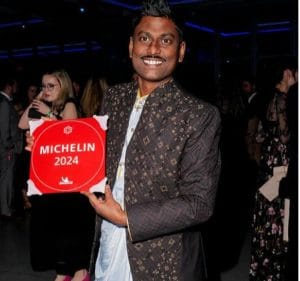
“My grandparents used to take me deer hunting, and my mother would collect goat intestines from the butcher—free of cost,” Kumar recalled. “She’d turn them into wholesome, incredibly flavourful dishes. Those memories have found a place on my menu.”
This sense of rootedness, of a distinct place called home, comes across immediately in the menu: Chettinad maan kari (venison shank braised with star anise and black stone flower), kudal varuval (a dry-fried preparation of goat intestines), Dindigul biryani (aromatic rice with goat meat), and Attu Kari Sukka (a fiery lamb fry).
“This is South Indian food in its most honest, unfiltered form,” Kumar said.
In April 2024, when two TikTok influencers, whose handle @theviplist is known for brutal takedowns of high-end restaurants, slammed Semma, the response was swift. Even Padma Lakshmi waded into the debate.
“Before you go off slagging other cuisines, you should understand them a little bit more, or at least, I don’t know, learn how to pronounce the dishes you’re actually critiquing,” she said in a video on TikTok.
“Semma isn’t made for you; it’s made for us. And I’m pretty sure if nobody but desis went there for the rest of its existence, it would still be booked solid for the next decade,” she added.
South Indian chefs are flaunting their culture now.
“Earlier, chefs in India wanted to become a French chef or an Italian one,” said chef Srijith Gopinathan, who co-founded Copra. “But now, South Indian chefs want to be known for who they are. They want to showcase their food and tell their own stories.”
After becoming the only Indian chef in the US to earn two Michelin stars, Gopinathan gave it all up to return to cooking the South Indian food he grew up with.
After being associated with Taj Campton Place in San Francisco for 15 years, Gopinathan opened Ettan in Palo Alto in 2020, followed by Copra (named after dried coconut flesh) in 2023.
At Copra, the food is inspired by the cuisines of Kerala and Tamil Nadu, and also has influences from the neighbouring nation, Sri Lanka. The three cuisines are quite similar, with many common ingredients such as seafood, tamarind, plantains, rice, and, of course, copra.
“Earlier, we modernised to make the food appealing to the people who weren’t aware of the Indian cuisine,” he said. “Today, chefs around the world want to do Indian cuisine.”
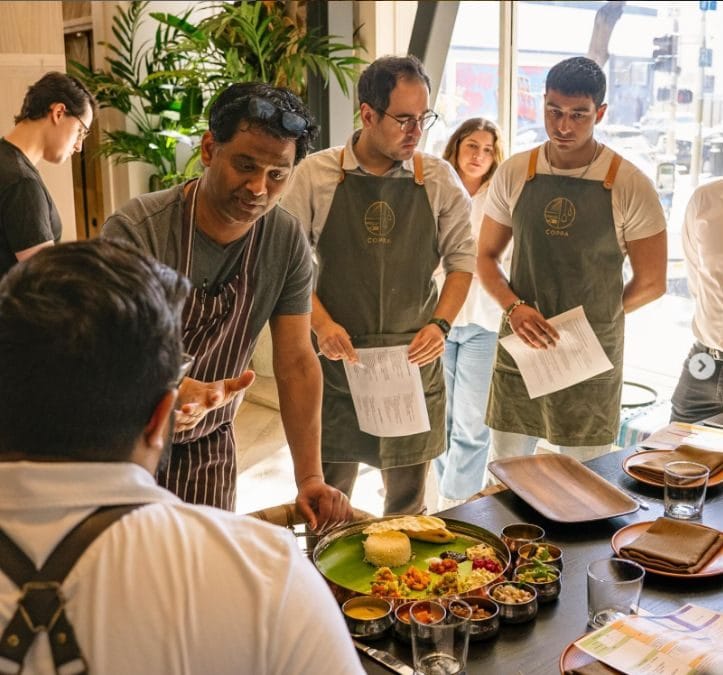
Gopinathan’s focus is on highlighting micro-cuisines of South India. His menu features kallappam (a fermented rice and coconut pancake found in Kerala), slow-cooked octopus, chargrilled bone marrow with chukka masala, braised lamb shank, crab curry, and black cod cooked in banana leaves.
In a similar way, Regi Mathew’s Chatti brings the essence of Kerala’s toddy shop cuisine to New York, taking inspiration from the communal dining culture. The restaurant offers a range of “touchings”—small portion side dishes meant to accompany drinks—featuring prawn pouches, spiced beef brisket, jackfruit cutlets, and duck mappas.
The menu includes beef fry, squid roast, and mussel roast, items that stay true to traditional recipes without Western adaptations. This approach reflects a broader movement in the Indian culinary scene, where chefs are embracing regional authenticity.
While Mathew steers clear of fusion cuisine, the menu is still unconventional. Coconut clams, tender jackfruit cutlet, and filter coffee pudding offer something new even for those familiar with the cuisine. Cocktails like Cochin Sour (made with Pandan whiskey, port wine, and cinnamon) and Sam Bar (made with vodka, clarified sambhar, and curry leaf powder), reinforce this story.
“Filter coffee is woven into the fabric of South Indian life. We wanted to reimagine it as a dessert. And coconut—another cornerstone of Kerala cuisine—has been integrated across the menu in thoughtful, authentic ways,” Mathew added.
Nishant Nair, a New Yorker whose father and grandmother once ran a toddy shop in Chittur, said that the experience at Chatti is deeply nostalgic.
Nair came across Chatti one evening while on a date near Times Square. Half-distracted by conversation, the medical engineer glanced through the menu and ordered prawn pouches.
The dish arrived wrapped delicately in a banana leaf. The first bite hit him like a wave—there was coconut masala, malabar tamarind, and then nostalgia. His eyes welled up and his grandmother’s face flickered to life in his mind.
“This is exactly what I grew up eating,” the 33-year-old said with certainty. Since Chatti’s opening in February, Nair has become a regular—it’s a personal ritual.
“It brings me closer to home,” he added. “To my childhood, to my memories.”
Also read: Palace dramas are the new OTT soaps. Real royals are just embarrassed
Tourism and migration
After enjoying a wholesome meal at Quilon, chef Sriram Aylur’s Michelin-starred restaurant in London, a family once offered a single piece of feedback as they left: “Could you add more Indian food to the menu?”
This was in the early 2000s—a time when South Indian cuisine was so unfamiliar in the UK that diners often mistook it for Middle Eastern or Sri Lankan.
But Aylur didn’t take the family’s advice and made no changes to his menu.
“It was hilarious,” he recalled. “But today, to see how much awareness and respect there is for South Indian cuisine—especially among non-Indian diners—is proof of how far we’ve come. And how much of that journey restaurants like ours have shaped.”
Quilon became the first South Indian restaurant in the world to earn a Michelin star in 2008, an honour it has retained through the years as its popularity soared.
At the heart of the global rise of South Indian cuisine lie two powerful forces: tourism and migration for work and business.
While South India has always been among the top destinations for international tourists, this interest only began to reflect in a love for the cuisine over the last decade.
“As people travelled, their understanding of Indian cuisine evolved,” Aylur said. “They moved beyond the usual North Indian staples and began discovering the incredible diversity of regional and even hyperlocal dishes.”
The second driver was the growing presence of South Indians abroad—not just in the labour force and the student community, but also as entrepreneurs and professionals.
While it took some time, the rise of southern cuisines in the West is changing the image of Indian food being “greasy” and “too spicy.”
London-born art curator Pat Evans’ first experience with Indian food wasn’t a fond memory. He was put off by the thick layer of oil oozing from the chicken curry box.
“It screams cholesterol from afar,” he said.
Chef Sriram Aylur explained that North Indian restaurants often serve Indian-inspired dishes rather than truly authentic ones. This is because dining out is about the overall experience, and the food is typically made richer—with more oil and spices—than what we cook at home. In contrast, South Indian cuisine tends to remain largely authentic and unaltered, even when served in restaurants.
“But, that’s why it did take time for people to embrace it,” he added.
In the post–Covid world, where clean eating has become a norm, South Indian food promises flavours minus the heartburn, bloating, heaviness, and other health concerns. And diners like Evans are coming back for more.
“My mouth doesn’t feel a burning sensation, instead the multi-layered flavour experience of the prawns and scallops has got me hooked,” Evans said.
“For us, the cuisine is a middle ground between the boring and bland British food and the overly spicy and greasy chicken tikkas.”
Meanwhile, over at Semma, Vijaya Kumar is still on a quest to bring his childhood memories to life—one dish at a time.
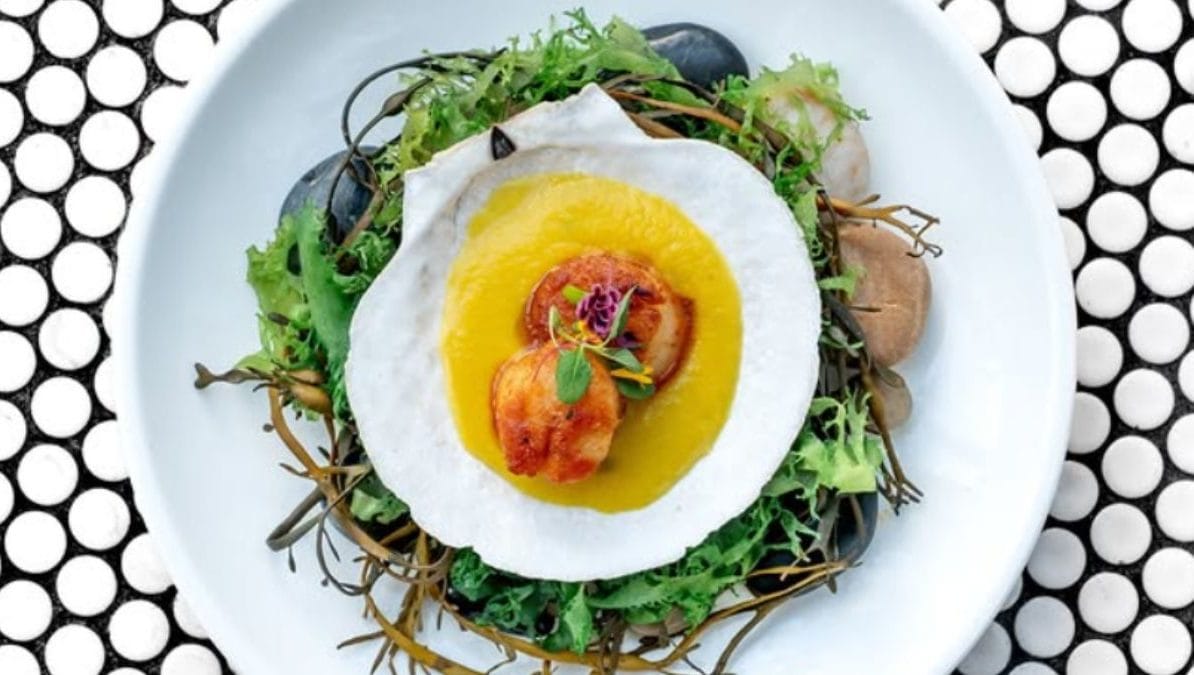
His latest creations are a playful trio: roadside kalan, annasi pazham scallops, and a mamabazham dessert.
Roadside kalan is a twist on street-style chaat, made with finely chopped mushrooms tossed in spicy sauces commonly used in Indian Chinese cuisine.
Annasi pazham scallops pairs fresh dayboat scallops with pineapple pachadi and jaggery, while the mamabazham dessert is Kumar’s mango-laced love letter to his childhood obsession with Alphonsos.
“Every dish unlocks a childhood memory… and this tradition will continue forever because the recipes are endless,” Kumar said.
(Edited by Prasanna Bachchhav)



